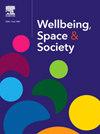Inclusive streetscapes: Embedding disabled people's lived experience into street accessibility
IF 2.2
Q2 GEOGRAPHY
引用次数: 0
Abstract
Disabled people face significant barriers in participating in society, reporting higher anxiety, limited access to education and lower employment prospects compared to non-disabled people. Central to these impacts is the failure of streetscape design to enable the independent movement of disabled people. However, to date, few studies have attempted to capture the lived experience of a disabled person using the streetscape. This empirical semi-structured interview study interviewed 26 people with lived experience of a disability (from around the UK) to define the streetscape barriers faced, the systemic reasons why these issues exist and propose a new path forward. After a standardised and rigorous thematic analysis; critical barriers in streetscape design were identified, the significant impacts on a disabled person were revealed and the reasons for the failure to address the issues were uncovered. This paper puts forward recommendations for streetscape design with direct relevance for local authorities, policy makers and designers in ensuring streetscapes become more accessible. The recommendations will be embedded into new cultures and poli of empowering disabled people in decision making. Future work must now assess the barriers raised in collaboration with disabled people, to prioritise actions and aim for an equitable streetscape for all.
包容性街道景观:将残疾人的生活经验融入街道无障碍环境中
与非残疾人相比,残疾人在参与社会生活方面面临着巨大的障碍,焦虑感更强,受教育的机会有限,就业前景较差。这些影响的核心是街景设计未能使残疾人独立行动。然而,迄今为止,很少有研究试图捕捉残疾人使用街景的生活体验。这项半结构式访谈的实证研究采访了 26 位(来自英国各地的)有残疾生活经历的人,以确定他们所面临的街景障碍、这些问题存在的系统性原因,并提出一条新的前进道路。经过标准化和严格的主题分析,确定了街景设计中的关键障碍,揭示了对残疾人的重大影响,并揭示了未能解决这些问题的原因。本文提出的街景设计建议与地方政府、政策制定者和设计师直接相关,以确保街景更加无障碍。这些建议将融入新的文化和政策中,使残疾人有能力参与决策。今后的工作必须与残疾人合作,评估所提出的障碍,确定行动的优先次序,为所有人打造公平的街景。
本文章由计算机程序翻译,如有差异,请以英文原文为准。
求助全文
约1分钟内获得全文
求助全文
来源期刊

Wellbeing Space and Society
Social Sciences-Social Sciences (miscellaneous)
CiteScore
2.70
自引率
0.00%
发文量
46
审稿时长
124 days
 求助内容:
求助内容: 应助结果提醒方式:
应助结果提醒方式:


